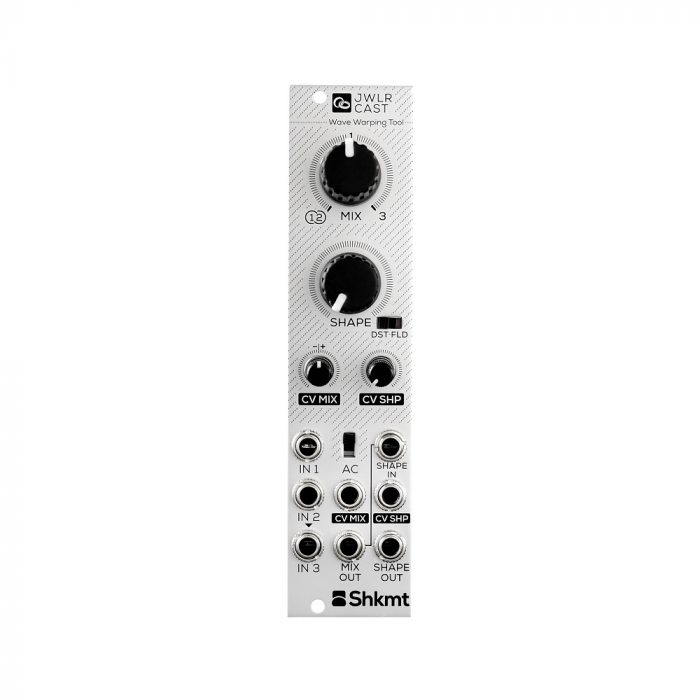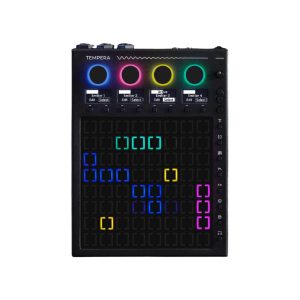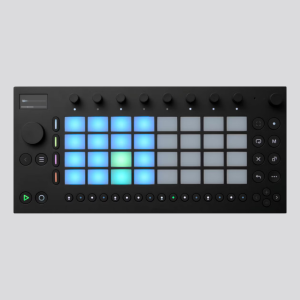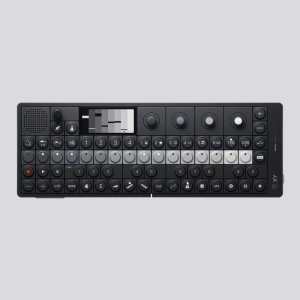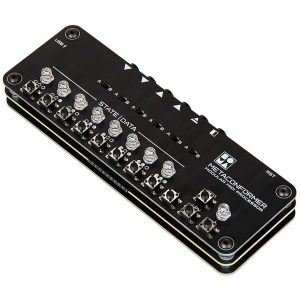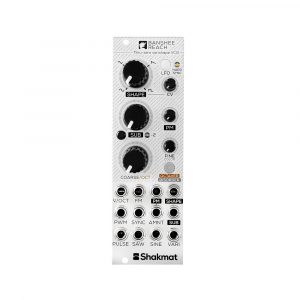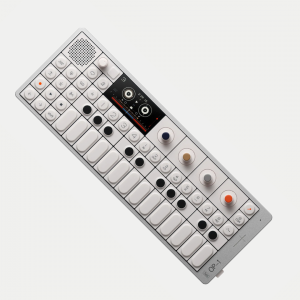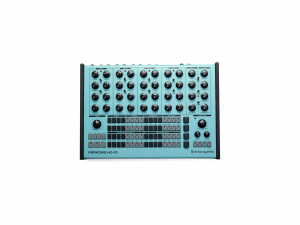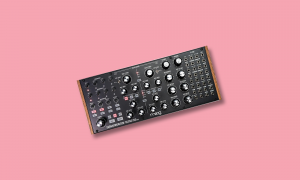Alongside its new VCO Shakmat Banshee Reach, Shakmat Modular has also released a waveshaper module that’s designed to pair nicely with a couple of said VCO (or any other oscillators, for that matter). Coming in at an even slimmer 6 HP and dubbed Shakmat Jeweler Cast, its primary use case is to shape and bend audio—two incoming VCOs are its bread and butter. But it can also be used on lower frequency CV signals like LFOs and envelopes, or really anything else that could use some additional processing. It cleverly combines a ring modulator, crossfader, wavefolder and distortion circuit in a single module; this allows for a wide range of processing combinations that range from subtle to extremely gnarly, all in a very small footprint that manages not to feel overly cramped.
At the heart of the module are two functions. First is the mix section, which is essentially a crossfader that blends between the module’s three inputs. Turn the mix knob right and it crossfades between inputs 1 and 3; turn it left, and it crossfades between input 1 and the result of the ring modulation between inputs 1 and 2. What’s clever here is how these functions are essentially folded into a single, continuous range; what would normally be two knobs instead becomes one, with a simplified routing that makes efficient use of panel space. Moving across this range can be CV controlled, with an attenuverter that sets the amplitude and phase of the control signal coming in. It’s also worth noting that the ring modulator used in Jeweler Cast is of the diode-based variety, producing a more vintage sound than the four-quadrant multiplier approach to ring mod that’s more commonly used these days.
The other zone of interest in the module is its shape section, which is normalized to the output of the mix section. A small switch lets you flip between either distortion (overdriving, clipping) or wavefolding. In the distortion mode, across the range you’re able to crossfade between the dry and distorted signals while adding gain; turned fully clockwise, pretty much any waveform essentially becomes a square wave. The wavefolder, meanwhile, adds subtle harmonics at the lower end of its range settings; at higher settings, for which you’ll want to feed it simple waveforms, it completely mangles whatever comes in. The shape parameter can also be controlled via its CV input, complete with its own attenuator. Having distortion and waveshaping accessible in a single small module like this is very handy indeed, providing multiple options for processing the same signal. Usefully, you also get individual outputs for the two outputs: one for the mix, and the other for the shaped version of that mix output.
Finally, as mentioned, the Jeweler Cast can also be used on CV signals, thanks to the module’s DC coupling. By fading between two incoming control signals, it’s easy to squeeze, warp, and add density and interest to modulation signals, bending smooth LFOs and envelopes into a wide range of distorted shapes. As a processor module, Jeweler Cast can accommodate manifold sources: running a pair of analog oscillators is great fun, of course, but so is pairing one of those with a digital wavetable oscillator, and provides dramatically different results. Finally, by melding together two simple LFOs you can create dynamic, unpredictable modulation sources—two related but very different ones, in fact, by taking the mix and shape outputs individually. With these different pairings, Jeweler Cast provides a vast landscape of timbral and modulation variation to explore.
